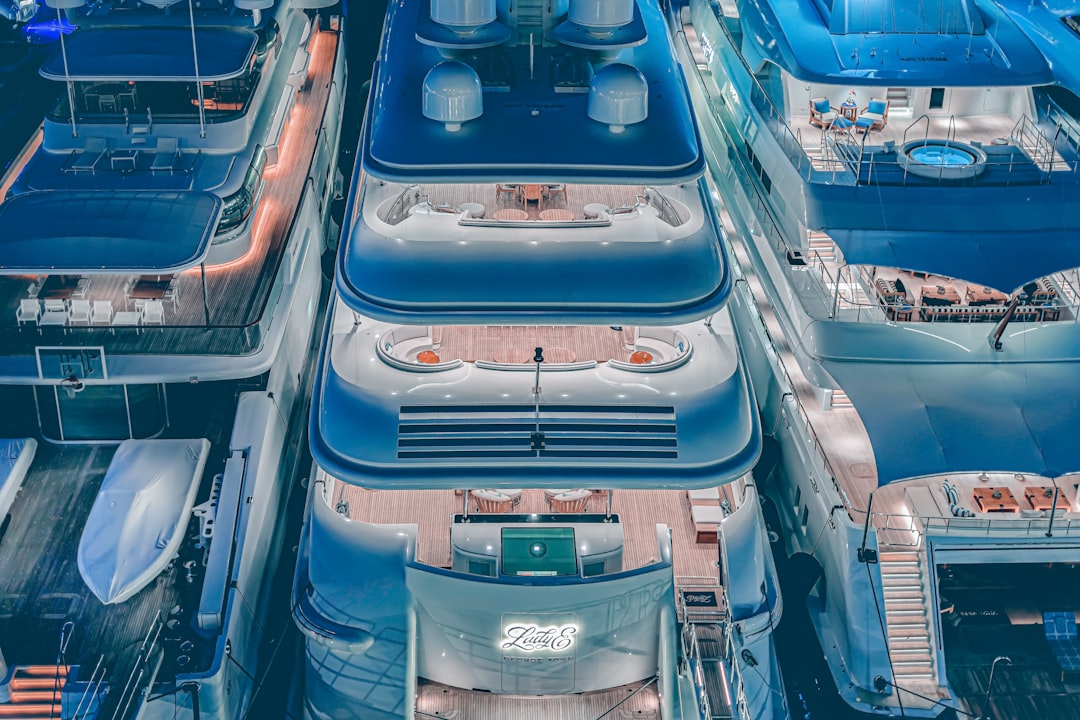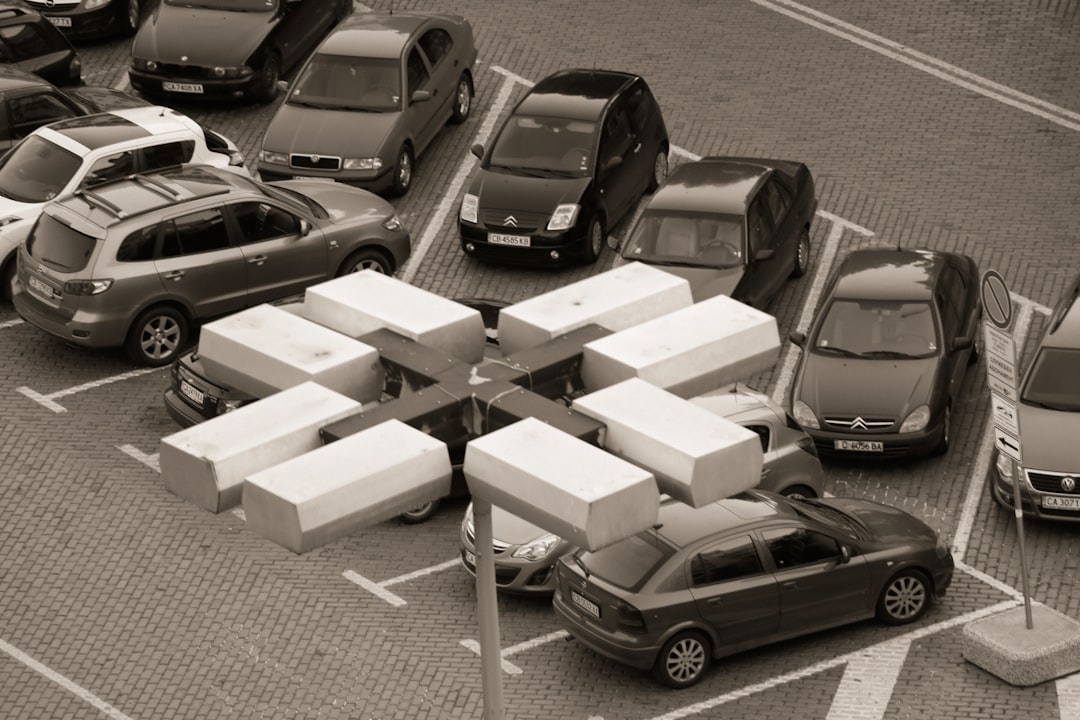

Engage prospects with a scan and streamline customer engagement with FREE QR code marketing tools by Sona – no strings attached!
Create a Free QR CodeFree consultation

No commitment

Engage prospects with a scan and streamline customer engagement with FREE QR code marketing tools by Sona – no strings attached!
Create a Free QR CodeFree consultation

No commitment
Auto distribution companies are navigating a dynamic market shaped by rising consumer expectations, tighter compliance requirements, and the push for digital transformation. Investments in showrooms, inventory systems, and advertising are necessary, yet many organizations still face a persistent gap between physical engagement and digital action. Prospects browse lots, scan window stickers, and attend events, but too often they leave without being captured as leads or routed to sales in time to matter.
Traditional offline tactics like brochures, paper forms, and static signage introduce friction, delay follow-up, and obscure attribution. When data does not flow into the CRM quickly and accurately, dealers lose visibility into who engaged, which models sparked interest, and when to reach out. That silence becomes costly in competitive markets where buyers expect immediate answers and personalized recommendations.
QR codes solve these challenges by turning every physical touchpoint into a gateway to measurable digital actions. With a quick scan, shoppers can request a test drive, compare trims, or explore financing options, while marketers gain real-time insight into intent, placement performance, and next-best actions. The result is more captured leads, faster response times, and a connected journey that reliably transforms in-person curiosity into revenue outcomes.

Lead capture fails most often where friction exists. In auto distribution, that friction shows up as clipboards at events, paper forms at service counters, and static window displays that require customers to type long URLs to learn more. The faster a high-intent buyer can act, the more likely you are to book a test drive, qualify financing, or secure a sale before a competitor does. QR codes are the bridge that turns physical interest into digital conversions with minimal effort.
Start by focusing QR adoption where it eliminates the most friction. Replace manual sign-ins at ride-and-drive events with Google Forms QR codes that route directly to your CRM. On the lot, put codes on windshields that point to real-time inventory pages and spec sheets. In the showroom, guide prospects to trade-in calculators and pre-qualification flows. Each scan becomes a data point tied to a specific model, location, and moment, which you can use for prioritization and follow-up.
Integrated digital workflows close the loop between offline interactions and sales action. When a prospect scans, fills a form, and gets an automated response plus a same-day call from a rep, you increase conversion likelihood while improving the customer experience. And yes, Sona QR is built to support each step of this transformation, from code creation and design to attribution and CRM integration.

Buyers no longer follow linear paths. They might see a billboard, walk a lot, read a review, then return for a test drive. Without a way to connect these moments, sales teams work blind and marketing teams struggle with offline attribution. QR codes turn passive interest into measurable engagement, allowing teams to capture demand the instant it appears.
QR codes also allow you to keep print materials relevant while your inventory, pricing, and promotions evolve. Static brochures become dynamic with a single scan, and dealership teams avoid reprinting costs each time a detail changes. Scan data reveals which placements and messages drive real action, not just awareness, so you can double down on what works.

Different touchpoints call for different QR code formats. In auto distribution, codes often drive to mobile-first experiences that capture lead data, present inventory, or connect prospects with a salesperson. Selecting the right format keeps the experience intuitive and makes follow-up easier.
For instance, vCards are helpful at events where representatives meet many prospects and want to share contact info instantly. Forms are ideal for test drive bookings, trade-in estimates, and service appointments. Dynamic web links work well for inventory and promotions that change frequently, while app downloads support ongoing engagement if you offer a consumer app.

Growth in auto distribution often depends on identifying moments that hint at purchase readiness, then meeting those moments with timely, relevant interactions. QR codes help you capture and understand these signals across all the places your brand meets potential buyers.
Focus on placements where intent is naturally concentrated. Events attract active researchers. Dealership lots are packed with in-the-moment interest. Service areas contain valuable upsell and retention opportunities. Direct mail can convert at-home attention into measurable actions that inform your next campaign.
QR codes work best when tied to clear actions that matter to your funnel. In auto distribution, three use cases consistently drive measurable results: scheduling test drives, delivering trusted information for pre-owned vehicles, and streamlining service bookings that feed long-term revenue.
For each use case, make the experience mobile-first, fast, and contextually relevant. A code on a windshield should load a spec page in seconds. A code in a mailer should jump straight to a personalized landing page. A code at a service desk should launch a simple appointment form that remembers the customer’s vehicle details.
Every scan carries context that helps you segment and prioritize. A scan on a pre-owned SUV window at 3 p.m. on a Saturday signals different intent than a scan on a financing offer in a mailer. With the right setup, these signals power smarter retargeting that treats high-fit, high-intent leads differently from casual browsers.
Use QR codes across the funnel and tag each one by placement, content, and desired action. When a prospect scans and submits a form, sync that data into your CRM and marketing tools automatically. Then enroll segments in tailored nurture programs designed to move them to the next-best step.
A strong marketing engine connects offline moments with digital engagement so that every channel informs the next. QR codes are the connective tissue that makes this possible in auto distribution. They transform brochures, signage, and events from static assets into interactive gateways that collect data and drive action.
Integrating QR codes into your existing channels improves attribution and reduces waste. You will see which mailers perform, which models captivate, and which events actually produce pipeline. Then you can reallocate budget toward placements and messages that consistently deliver.
Centralized analytics in a platform like Sona QR unify these channels. You can manage codes at scale, monitor performance, and sync scan data to your CRM and ad platforms so that every engagement moves the buyer journey forward.
Launching your first or next QR campaign is most effective when you follow a consistent, repeatable process. The steps below help you focus on outcomes, ensure scannability, and create the data connections that fuel better marketing and faster sales follow-up.
Before you begin, pick a single high-impact use case, such as test drive booking on the lot or service appointment scheduling via mailers. Start small, measure, then expand to additional placements once you have a winning pattern.
Define a clear outcome that addresses a known friction point. For example, replace paper sign-ups at a spring sales event with a scan-to-book test drive form that captures name, contact info, and preferred model. Confirm how success will be measured, such as increasing bookings by 25 percent or cutting time-to-contact in half.
Select the code type that matches your objective. Static codes work for fixed destinations like a PDF brochure. Dynamic codes are better for inventory pages, offers, and anything that requires tracking, editing, or attribution.
Make scanning effortless and appealing. Add a clear frame, your logo, and a benefit-driven call to action such as Scan to schedule your test drive or Scan for your trade-in value. Then test across devices and conditions to ensure reliability.
Place codes where intent and traffic are high. On-lot windshields, entrance signage, service waiting areas, event booths, and direct mailers are proven placements. Make sure the destination aligns with the context.
Conversion lift comes from iteration. Review performance weekly during active campaigns, then evolve placement, messaging, and creative based on what you learn.

Attribution is a persistent pain point in auto distribution. You can see foot traffic and hear anecdotal feedback, but without connected analytics, it is hard to know which channels produce qualified pipeline and which touchpoints need improvement. QR codes give you granular visibility into who scanned, where they were, and what happened next.
The goal is not just to count scans, but to connect them to outcomes like booked test drives, approved financing, or closed deals. This requires a platform and process that move beyond vanity metrics. It means unifying scans with web sessions, email engagement, ad clicks, and CRM activity to build a complete buyer journey.
Scaling QR success requires intentional design, staff enablement, and automation. Once the basics work, small optimizations compound into meaningful gains in scan rates, lead conversion, and sales velocity. Treat every code as a campaign asset with a clear purpose, measurable KPIs, and a defined next step.
Consider adding QR touchpoints to non-obvious interactions where attention is high. For example, include a code on delivery-day photo backdrops to encourage reviews and referrals, or on warranty paperwork that links to a maintenance plan enrollment form. Creativity paired with measurement is your advantage.
As competition intensifies and buyers expect immediate, personalized experiences, QR-enabled workflows deliver both reach and efficiency. By solving late lead capture, improving visibility into visitor behavior, and strengthening attribution, you convert more in-person moments into measurable, revenue-producing outcomes. With Sona QR, you can Start creating QR codes for free, manage campaigns centrally, and connect offline engagement to pipeline with confidence.
QR codes have transformed auto distribution companies from traditional lead capture methods into dynamic, measurable growth engines. Whether it’s acquiring new buyers, streamlining customer interactions at dealerships, or tracking the effectiveness of marketing materials, QR codes replace manual processes with instant, mobile-friendly actions that capture real-time data to fuel smarter sales strategies. Imagine knowing exactly which brochures or displays generate the most qualified leads—and being able to optimize those assets on the fly.
With Sona QR, you can create dynamic, trackable QR codes in seconds, update campaigns instantly without costly reprints, and connect every scan directly to your sales pipeline. No more guessing which efforts pay off—just clear insights that turn every interaction into a valuable conversion. Start for free with Sona QR today and transform how your auto distribution company captures and converts leads with confidence.
They use QR codes to turn physical touchpoints like vehicle stickers and showroom displays into gateways for digital actions such as test drive requests, financing exploration, and trade-in calculations, enabling faster responses and personalized journeys.
QR codes reduce friction in lead capture, provide real-time tracking and attribution, keep print materials dynamic, improve customer engagement speed, and lower marketing costs by connecting offline interactions to digital actions.
QR codes capture scan data with context like location, time, and device, sync with CRM systems, and use UTM parameters to measure which placements and campaigns generate quality leads and conversions.
They use QR codes for test drive scheduling with automated confirmations, providing detailed pre-owned vehicle information, streamlining service appointment bookings, encouraging social sharing at delivery, and enabling personalized direct mail offers.
QR codes eliminate manual paperwork by enabling instant form submissions for bookings and financing, provide immediate access to up-to-date vehicle information, and trigger automated sales follow-ups that accelerate decision-making and increase conversion rates.
Use Sona QR's trackable codes to improve customer acquisition and engagement today.
Create Your FREE Trackable QR Code in SecondsJoin results-focused teams combining Sona Platform automation with advanced Google Ads strategies to scale lead generation

Connect your existing CRM

Free Account Enrichment

No setup fees
No commitment required

Free consultation

Get a custom Google Ads roadmap for your business






Launch campaigns that generate qualified leads in 30 days or less.
